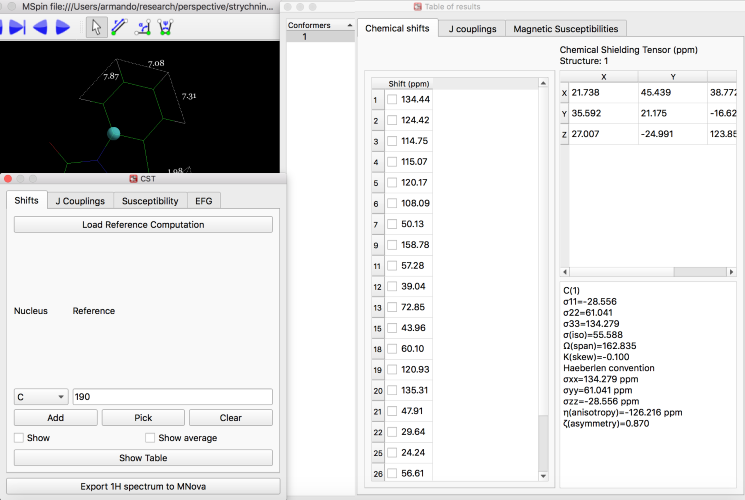
Prediction and analysis of NMR properties from 3D molecular structure
Mspin capabilities include full relaxation matrix of NOESY/ROESY cross peaks intensities, scalar couplings (Karplus and Altona equations), analysis of ab initio computations, and analysis of NMR properties in aligned media and paramagnetic systems such as RDCS, RCSAs, pseudocontact shifts, and residual quadrupolar couplings.
Mestrelab will no longer develop Mspin software.
Of course Mestrelab will continue supporting you if you have an existing Mspin license until full decomission of this product.
We strongly recommend you to try Mnova StereoFitter by clicking on the red button above which already contains most of Mspin features and more!
Contact us if you are interested in any particular 3D structural elucidation tool.

An integrated platform for the prediction and analysis of several NMR properties.
MSpin: 45-day FREE trial
 1. Download
1. Download
Download MSpin for a suitable Operating System.
 2. Installation
2. Installation
Open MSpin and go to ‘Help/Get-Install Licenses’. Select ‘Evaluate’.
 3. License
3. License
Fill in the form to receive your trial license via e-mail.
Last published version: 22 Jan 2019
- To download old versions: Click here
- Latest Manual: Download the latest manual (PDF)
Help & Support
 Videos
Videos
 Publications
Publications
Mspin
Highlights

Predict NMR properties that are essential in the stereochemical analysis of small molecules.
Mspin
Features

NMR in aligned media
Configurational and conformational analysis through the use of anisotropic NMR observables such as RDCs, RCSAs, or even quadrupolar splittings and pseudocontact shifts

NOE intensities from internuclear distances
A module for the prediction of NOE/ROE intensities from single structures or conformational ensembles using the full relaxation matrix method.

Prediction of vicinal coupling constants
A chemically intelligent module for the prediction of scalar couplings from 3D structures with the possibility of deployment of new parameters sets and even full equations through a rich chemical information API.
Mspin Users
Markets
- Determination of relative configuration in small molecules
- NMR in anisotropic media
- Conformational analysis
- Development of new scalar couplings empirical equations




Success Stories






